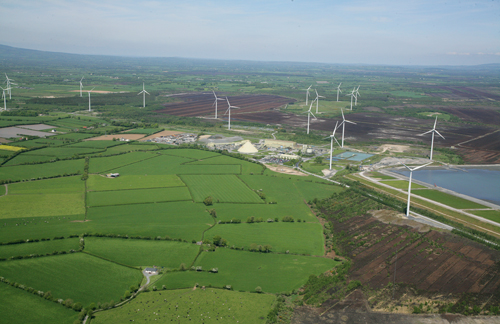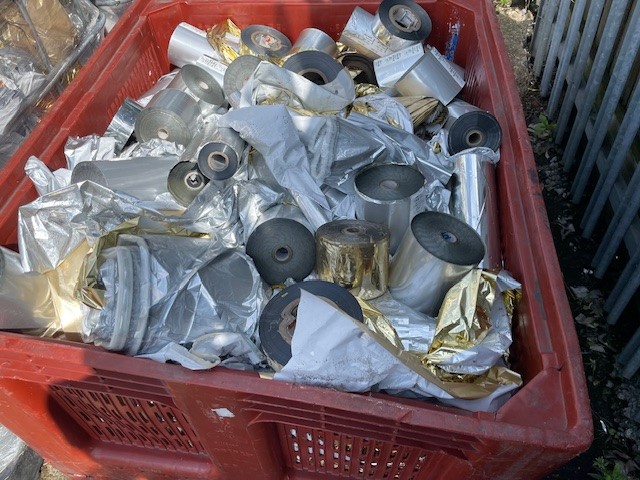
In more than two decades since the first wind farm project was realised in 1992 at Bellacorrick, County Mayo, wind energy’s contribution to Ireland’s electricity supply has steadily risen to the point where it had installed 1.7GW of capacity by the end of 2012.
With the country now tasked with achieving its national targets for renewable energy by 2020, which calls for 40 percent of its electricity to come from renewable sources, an estimated 5,500 to 6,000MW of wind generation is required.
One of the companyies contributing towards Ireland’s long term energy plans is Element Power. Owned by Hudson Clean Energy Partners, Element Power is a global renewable energy developer that develops, acquires, builds, owns and operates a portfolio of wind and solar power generation facilities worldwide. The company is active in 16 countries, with more than 9,280MW of projects in development and a number of operating assets already sold.
“Element Power itself is not an old company, having only been set up in 2008 by President and COO, Mike O’Neill,” states Peter Harte, Chief Technical Officer for Ireland. “What it does possess however is a management team with a great deal of experience having previously been a part of SWS Energy, a very successful independent wind business that we collectively built from having a staff of three people to one employing between 60 and 70 in a matter of years.”
At the time that O’Neill, Harte and his former colleagues at SWS Energy, Tim Cowhig and Kevin O’Donovan set up Element Power’s operations in Ireland, the country’s domestic wind business was in many ways a struggling sector, one facing problems with curtailment, refit schemes and with establishing greenfield developments due to a lack of good grid connections. The answer to these challenges was for the company to buy into two existing projects, the Garranereagh Wind Farm Project and the Monaincha Project, which it has since gone on to develop and improve upon further.
“The Garranereagh Wind Farm Project is a 9MW project that was officially commissioned in August of this year, while the Monaincha Project is a 36MW undertaking that is currently under construction, with the turbines due to arrive on site at the beginning of December, with the aim being for it to be commissioned come the Spring of 2014,” Harte continues. “In addition to these we have a further two projects, the 17MW Acres Project Donegal and the 32 MW Barranafaddock Project in Cork, where construction is also set to begin during 2014.”
A quick glance at Element Power’s busy calendar of activities over the coming months highlights the fact that the wind power industry has undergone a notable change in only the five years since the company was established. The driving force behind this change is without doubt the aforementioned Irish national policy to meet its target of ensuring that 40 percent of its electricity is derived from renewable sources by 2020. This itself is the result of European Union demands that 16 percent of the country’s total energy mix should originate from renewable methods by the turn of the next decade.
“In response to being set these targets,” Harte explains, “the Irish government introduced a raft of policies centred on planning, grid allocation and pricing, making it more favourable to build wind projects in the country. I think in many ways this was a relatively easy policy decision for the government to make because, while it could meet its renewable targets using a variety of technologies, Ireland already boasts exceptional wind resources and the type of favourable conditions that have allowed it to become a most mature and competitive renewable source for a percentage of our electricity.”
In addition to the various projects detailed previously, Element Power has also spent the better part of the last three years laying the groundwork for one of the largest and most ambitious wind power related undertakings ever seen anywhere in the British Isles. I am referring to the Greenwire Project, a 3GW export project to the UK.
“To date, we have secured private land for approximately two of the three gigawatts for the Greenwire Project, have secured a good connection in the UK for a 2017 connection date and will be looking to submit a complete planning application in 2014,” Harte says. “Powered by a fleet of approximately 40 projects in the midlands of Ireland, the objective for the Greenwire Project is to have it providing green power to the UK by 2020 for an estimated operating lifetime of 25 years.”
The sheer scale of the Greenwire Project can be highlighted in several ways. In megawatt terms the project alone will deliver more than twice the amount generated across Ireland at present, while in terms of wind farm sites it will see Element Power building a further 40 on top of the 160 that already exist.
Meanwhile the scale of the grid connection alone is huge, with over 1,000 kilometres of underground cable being required to connect up all the turbines and export the power to the UK. “As you can imagine, this is a very specific engineering task in itself,” Harte says. “Nevertheless, the feasibility and costs have been demonstrated pretty well by the recent 500MW East-West Interconnection, which was commissioned last year.”
The significance of Harte’s reference to the East-West Interconnection also stems from the fact that this was a project overseen by Dermot Byrne, a highly respected figure in the Irish energy business who was officially unveiled as non-executive director of Element Power’s Irish subsidiary at the end of October.
“Dermot joins us having successfully led EirGrid, the transmission system operator for Ireland, through a substantial period of change to become a world leader in the integration of wind power into the power network,” Harte enthuses. “Element Power will be able to call upon his experience to guide it, particularly throughout the Greenwire Project which will break a lot of new ground in the years to come.”
Other plans for the months and years ahead for Element Power look set to revolve around continuing to acquire projects that are not yet fully developed, before improving them through the use of its own development expertise and construction skills. “We have good access to both bank and equity finance and this will allow us to continue to replicate the business model which has proven so successful to date, and place us in a position to have two or three projects running through the system at any one time,” Harte concludes.
Written by Will Daynes, research by David Brogan



 ElementPower-Euro-Energy-Jan14-Bro-s.pdf
ElementPower-Euro-Energy-Jan14-Bro-s.pdf








